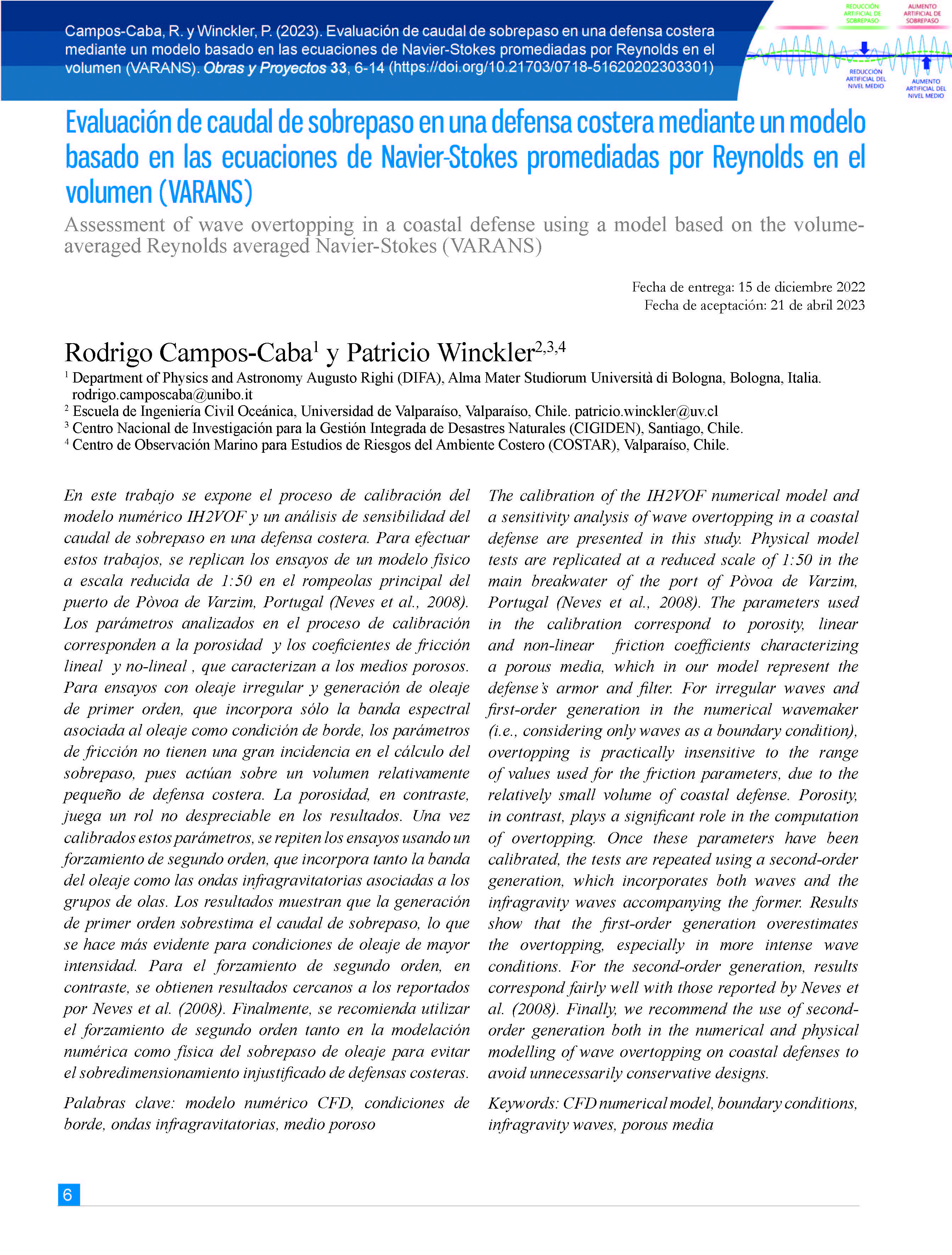Assessment of wave overtopping in a coastal defense using a model based on the volume-averaged Reynolds averaged Navier-Stokes (VARANS)
DOI:
https://doi.org/10.21703/0718-281320233301Keywords:
CDF numerical model, boundary conditions, infragravity waves, porous mediaAbstract
The calibration of the IH2VOF numerical model and a sensitivity analysis of wave overtopping in a coastal defense are presented in this study. Physical model tests are replicated at a reduced scale of 1:50 in the main breakwater of the port of Pòvoa de Varzim, Portugal (Neves et al., 2008). The parameters used in the calibration correspond to porosity, linear and non-linear friction coefficients characterizing a porous media, which in our model represent the defense’s armor and filter. For irregular waves and first-order generation in the numerical wavemaker (i.e., considering only waves as a boundary condition), overtopping is practically insensitive to the range of values used for the friction parameters, due to the relatively small volume of coastal defense. Porosity, in contrast, plays a significant role in the computation of overtopping. Once these parameters have been calibrated, the tests are repeated using a second-order generation, which incorporates both waves and the infragravity waves accompanying the former. Results show that the first-order generation overestimates the overtopping, especially in more intense wave conditions. For the second-order generation, results correspond fairly well with those reported by Neves et al. (2008). Finally, we recommend the use of second-order generation both in the numerical and physical modelling of wave overtopping on coastal defenses to avoid unnecessarily conservative designs.

Downloads
Published
Issue
Section
License

This work is licensed under a Creative Commons Attribution-NonCommercial 4.0 International License.







